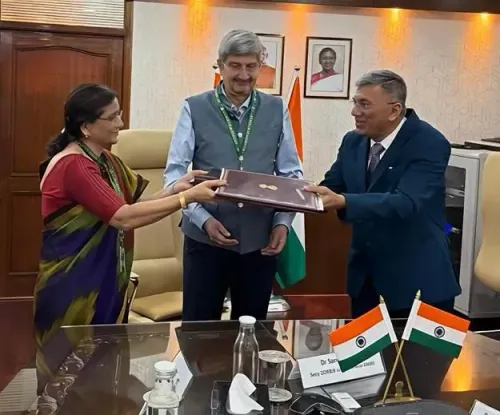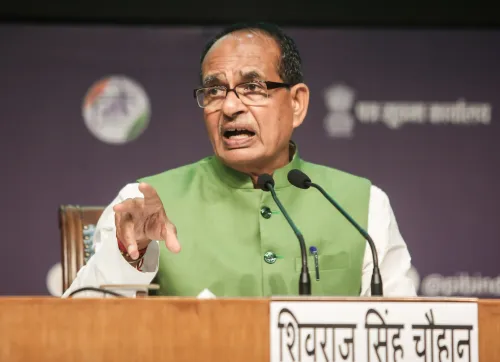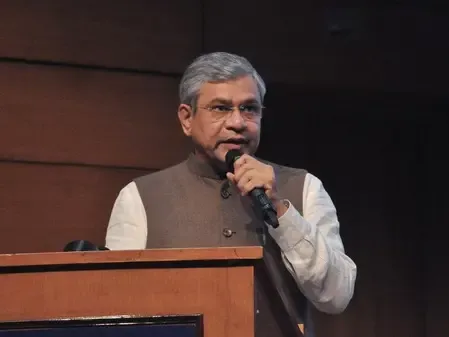Why Did Navratri Sales of Consumer Goods Surge to a 10-Year High?

Synopsis
Key Takeaways
- Navratri sales reached a 10-year high.
- GST reforms have significantly lowered product prices.
- Automobile sales saw remarkable growth, especially in SUVs.
- Consumer electronics reported high double-digit sales growth.
- The festive season accounts for a large portion of annual sales.
New Delhi, Oct 3 (NationPress) India’s economy has experienced its highest Navratri consumer goods sales in over a decade, driven by the government’s innovative GST reforms that lowered tax rates, making products more accessible for consumers.
These reforms not only reduced prices but also unlocked consumer aspirations, allowing families to upgrade vehicles, invest in home appliances, and spend more on lifestyle products. This surge in festive cheer resulted in unprecedented consumption, according to the latest data.
Leading automobile manufacturer Maruti Suzuki reported a remarkable 100% growth during Navratri, doubling its figures from the previous year—marking its best performance in at least a decade. The company recorded 150,000 bookings and anticipates reaching 200,000 bookings, compared to 85,000 vehicles sold last Navratri.
The automobile leader also delivered an impressive 1.65 lakh vehicles within the first eight days of Navratri. On the inaugural day, Maruti achieved a record delivery of 30,000 cars, its best single-day performance in 35 years.
Another homegrown auto giant, Mahindra & Mahindra, known for its popular SUVs like the XUV700, Thar, and Scorpio N, saw a remarkable 60% year-on-year sales increase.
At Hyundai, the rising demand for models such as Creta and Venue elevated the SUV segment's share of overall sales to over 72%, as indicated by the data.
Tata Motors sold more than 50,000 vehicles during the festive timeframe, driven by demand for the Altroz, Punch, Nexon, and Tiago models.
The two-wheeler manufacturer Hero MotoCorp saw showroom footfall double this Navratri, particularly in the commuter segment, while its competitor Bajaj Auto also reported strong sales.
In the consumer electronics sector, brands like LG, Haier, and Godrej Appliances enjoyed substantial double-digit sales growth compared to last year.
Haier’s sales surged by an astonishing 85%, nearly exhausting its Diwali inventory of 85-inch and 100-inch TVs priced above Rs 2.5 lakh. The company also sold 300-350 units of 65-inch TVs daily during this period. Meanwhile, LG Electronics India noted “exponential growth” in sales during this Navratri season.
By streamlining GST slabs and alleviating the tax burden on both essential and luxury items, the government fostered a climate of confident spending. Consequently, brands and retailers experienced sales growth ranging from 25% to 100%, providing a significant boost to India's consumption-driven economy.
Notably, the initial half of the festive season, which includes Onam, Durga Puja, and Dussehra, accounts for 40-45% of total festive sales, establishing it as the largest consumption period in the country.









